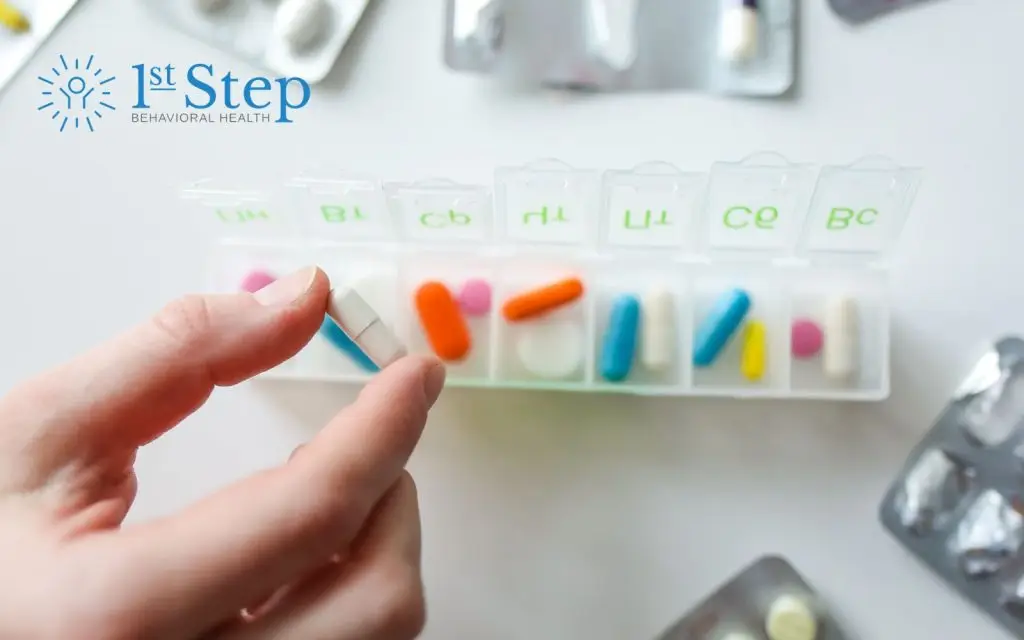Millions of people in the United States use prescription drugs to treat various medical conditions. Some of these medications have the potential for side effects. Combining medications with other substances, including other prescription drugs, can be dangerous.
This article will explore the risks of mixing two common prescription drugs called gabapentin and tramadol. You will learn:
- The side effects of gabapentin and tramadol
- The dangers of mixing these drugs
- How to recognize substance use disorder (SUD)
- Where to find addiction treatment and recovery support
If you or someone you love is one of the millions of people who live with substance abuse or addiction, seek the treatment you need now. Reach out to the specialists at First Step Behavioral Health to explore your treatment options or to schedule an intake appointment.
What is Gabapentin?
Gabapentin is a prescription medication used to relieve neuropathic pain (nerve pain). It is effective at reducing pain that occurs after nerve damage. People may also take it to treat nerve pain after shingles infections and other conditions. Gabapentin can also reduce the risk of seizures, treat restless leg syndrome, or relieve anxiety.
Gabapentin alters the way the brain senses pain. It can also alter neurotransmitter (brain chemical) levels that affect how nerves communicate.
The Side Effects of Gabapentin
Like all medications, gabapentin has the potential to cause side effects. Common side effects of gabapentin include:
- Headaches
- Dizziness
- Fatigue
- Shaking
- Double vision
- Diarrhea
- Flu-like symptoms
- Joint or back pain
- Constipation
- Unusual thoughts
- Anxiety
- Unsteady gait
- Heartburn
- Swelling in the extremities
- Dry mouth
- Nausea and vomiting
- Weight loss or gain
Some of gabapentin’s side effects may be serious or life-threatening. These include:
- Swelling in the throat or face
- Difficulty breathing or swallowing
- Severe rash
- Itching
- Hoarse voice
- Seizures
People may require immediate treatment from a healthcare professional if they experience these or other dangerous side effects. Combining gabapentin and other substances can increase the risk of dangerous side effects.
What is Tramadol?
Tramadol is a prescription opioid drug. Doctors may prescribe it to treat moderate to severe pain. It works by binding to the brain’s opioid receptors. Some people may also take it to treat depression, even though it is not intended for this purpose.
Tramadol is different from other opioids because it has a dual mechanism of action. This makes it an effective pain reliever. However, it also increases the risk of side effects and potential interactions that could cause harm.
The Side Effects of Tramadol
Like other medications, tramadol can cause side effects. Some of the potential side effects of tramadol include:
- Anxiety
- Uncontrollable tremors
- Drowsiness
- Heartburn
- Changes in mood or mood swings
- Dry mouth
- Headaches
Tramadol may cause dangerous side effects, including:
- Serotonin syndrome symptoms, including hallucinations, muscle stiffness, nausea, shivering, fever, loss of coordination, etc.
- Chest pain
- Hives, blisters, or rash
- Swelling in the extremities, face, or throat
- Seizures
People who abuse tramadol may develop symptoms of addiction, including:
- Withdrawal symptoms when they stop taking it
- Needing high doses to get the desired effects
- Cravings
People who become addicted to opioids like tramadol may require intensive treatment and continuing support to stop using it safely.
The Dangers of Mixing Tramadol and Gabapentin
Your doctor will advise you about combining medications. Always talk to your doctor about any medications you are taking. It is important to tell your healthcare provider about all drugs you are taking, including drugs you take without a prescription.
In most cases, healthcare providers advise against mixing tramadol and gabapentin. One of the most significant risks of taking tramadol and gabapentin together is respiratory depression.
Respiratory depression–meaning slow or shallow breathing–can result in a dangerous lack of oxygen in the blood. People can lose consciousness, slip into a coma, or die. Or, they may experience long-term effects like brain damage and cognitive problems.
Other potential dangerous drug interactions include:
- Excessive sedation and drowsiness
- Increased risk of seizures
- Difficulty concentrating
- General weakness
- Lethargy
- Nausea and vomiting
If you are taking prescription gabapentin or tramadol, talk to your doctor before combining it with other substances. If you struggle to stop taking gabapentin or tramadol, you may require substance abuse treatment.
Do I Need Treatment for Substance Abuse?
Many people develop an addiction to prescription medications. It is critical to know the signs of substance abuse and seek treatment right away.
Some signs of prescription drug abuse include:
- Taking a higher dose of your medication or taking it more often than prescribed
- Needing to take a higher dose to get the desired effects
- Feeling anxious if you run out of your prescription drug
- Doing illegal or dishonest things to get more of a medication
- Experiencing withdrawal symptoms if you stop taking it
- Having cravings for a prescription drug
- Taking a prescription drug recreationally (without a prescription)
It can be challenging to overcome prescription drug abuse. Having the right kind of treatment and ongoing support can help you address the complex roots of your substance abuse and work toward lifetime recovery.
Find Treatment Now
If you or a loved one needs treatment for substance use disorder (SUD), you are not alone. Reach out to the specialists at First Step Behavioral Health to explore our treatment programs. Contact us with questions or to schedule an intake appointment.
References:
- Science Direct: Gabapentin
- Psychiatry Online: Outpatient Off-Label Gabapentin Use for Psychiatric Indications Among U.S. Adults, 2011–2016
- National Institute of Health (NIH): Tramadol
- Springer Nature Link: A review on tramadol toxicity: mechanism of action, clinical presentation, and treatment
- NIH: Synergism between gabapentin-tramadol in experimental diabetic neuropathic pain

